Organic fertilizer, what is it good for?
User
7 years ago
Featured Answer
Sort by:Oldest
Comments (54)
reeljake
7 years agoUser
7 years agoRelated Discussions
Bermuda questions - new home
Comments (4)Get a cup of coffee and read the Bermuda Bible. Everything you ask is answered there. See link below! --------------------------------> Here is a link that might be useful: The Bermuda Bible...See MoreSource for Slow Release Organic Fertilizer and other Organic Fert
Comments (21)There will always be zealots in the anti-biosolids area that are long on "it might be a risk" or Europe's standards are lower,yet they still fail to produce real hard data. For example, what they leave out is the load limit of some of these metals, such as copper and lead in class A and even class B biosoilds. You would need to apply Milorganite EVERY year or some other biosolid like it for 345 years for lead and 278 years for copper for it to reach its EPA load limit. That doesn't even account for organic binding, mineralization and leaching/migration of the metals harmlessly in the soil. I don't know about you, but even with long life in my family, I doubt I will be around that long to worry about it. I use Milorganite on everything and I have even seen the independent report and have spoken with an independent scientist who tested it for a bioremediation project for the DoD. She indicated it was lower in metals and other contaminants than the tap water and virgin soil they were going to use in the project. Compare class A biosoilds to Scott's or Ironite sometime and decide which will be better to put down as fertilizer for your kids or pets to play around. BTW, the National Science Foundation did an independent study and risk assessment in 1995 of EPA biosolids regulations and found they were far below any levels that would possibly pose any threat to humans, wildlife, soil or water and agriculture. The zealots seem to overlook this fact as well in their quest to malign well managed practices of biosolid use. There has NEVER been a documented case of the regulated use of biosolids causing harm to people, animals or plants in over 35 years of use in our environment-yet the myth and junk science persists. I will continue to use and benefit from Milorganite on my lawn, veggies, ornamentals like temperate tropicals and palm trees....See MoreMedina organic fertilizer-good or bad??
Comments (14)Use the stuff with no fear - organics will not burn or harm your plant. I have had my best luck with using an all-organic program that is manure based (either horse, cow, or poultry). There is no need to fear bad microbes with properly composted &/or pasturized manure - composting gets rid of the bad & encourages the good (which is not harmful to us, only beneficial to the plant); pasturizing may kill microbes, but it's only killing bad. It's the process of composting that encourages already existing good microbes in the soil, that's why it's good to put certain types of uncomposted organic matter in soils (ie: letting grass cippings drop behind every now & then, or spreading manure). As for the guy who has no need for molasses, poultry manure & humates, this is what I've learned through scientific research of the materials: The molasses is a high quality natural sugar which is loaded with all kind of nutrients that provide food for the GOOD microbes, to encourage their propogation, & therefore health of the soil - the poulty manure is a manure product that is very high in nitrogen per pound (more so than many other manures), as well as the other nutrients needed, but yet won't burn the plant on application, like chemical fertilizers (it also slow releases, so it doesn't wash into our waterways causing fish death & drinking water contamination) - the humates stimulate growth & plant development by storing nutrients for slow release - and just for the record, the sea kelp is a great source of organic nutrients, & green sand is a natural source of iron & other minerals that won't burn a plant, either. I've used this product on my St. Aug & Bermuda grass lawns & pastures, & have had much luck with using it in conjuction with spreading dried horse manure with one of my applications yearly, as well. I've have also had FABULOUS luck using this product in my garden with composted horse manure, & a sprinkiling of dissolved diluted molasses (cheap livestock feeding type) 1x per growing season. I will most certainly look for & use it again - so I have nothing but good to say about this product or Medina products, in general. Also, the odor dissapates in 2 days if watered so that it breaks down from it's pellet form - after the watering the smell rapidly leaves after less than 24 hours. If you don't water, it will take a couple days more to dissapate . My only warning when using the product is to be sure to water it until it breaks down from it's pellet form (just needs to be saturated for this to happen) if you're using it in a pet yard - if you don't, your dog may eat it. It WON'T harm the dog (as it is pasturized against the bad stuff), but I just find this a pretty disgusting canine practice! (Also, for the equine uneducated, dogs LOVE dried road apples left behind from horses - yuk!)...See MoreHow good is Meat Meal as an Organic Fertilizer?
Comments (8)container blueberry, some folks on this forum have yet to grasp the concept of what an organic fertilizer is and how it can be beneficial to your specific growing operation. Take advice offered by them with a very large grain of salt!! Meat meal is not all that different from any other protein-based animal byproduct used as an organic fertilizer - bone meal, blood meal, feather meal, fish meal, etc., etc. Typically, you will see it listed as MBM - meat and bone meal - as one is heavier on the N levels and the other on the P. Together they form a relatively balanced and fast-acting basic nutrient source. Organic fertilizers are intended to supply specific nutrients that may be missing or deficient in existing soil. Simply adding organic matter can not always satisfy the nutrient demands of fast growing crops in a single growing season. Organic farming operations have utilized supplemental fertilization practices for decades in addition to the more typical annual cover cropping or applications of manures, composts or other OM. That is why many organic fertilizers are OMRI approved -- if they were never necessary (or somehow bad for the soil) as some posters would lead you to believe, there would not be the massive market for them there is nor any need for the organic gardening/farming approval. Since all organic fertilizers (other than mined minerals) are derived from plant and animal byproducts, they ARE JUST AS MUCH ORGANIC MATTER as is compost or animal manures. That emphasis is intended for those who persist in thinking they are not. They require activation (mineralization/digestion) by soil organisms to release the nutrients into plant-accessible forms. In this way, they encourage all manner of soil biology and improve the soil in much the same manner as any other form of OM. Plus they offer the benefit of specific nutrient supplementation and often in a much more fast-acting form than does typical OM....See MoreUser
7 years agodchall_san_antonio
7 years agoUser
7 years agodanielj_2009
7 years agoUser
7 years agolast modified: 7 years agoT B
7 years agodchall_san_antonio
7 years agodanielj_2009
7 years agoUser
7 years agoUser
7 years agodanielj_2009
7 years agoUser
7 years agodanielj_2009
7 years agolast modified: 7 years agoUser
7 years agohawksster .
7 years agolast modified: 7 years agoUser
7 years agodanielj_2009
7 years agohawksster .
7 years agoreeljake
7 years agodanielj_2009
7 years agoUser
7 years agodchall_san_antonio
7 years agoreeljake
7 years agoTS Garp
7 years agoUser
7 years agoUser
7 years agolast modified: 7 years agoUser
7 years agohawksster .
7 years agodchall_san_antonio
7 years agodchall_san_antonio
7 years agodanielj_2009
7 years agohawksster .
7 years agodanielj_2009
7 years agoUser
7 years agolast modified: 7 years agodanielj_2009
7 years agolast modified: 7 years agoUser
7 years agodanielj_2009
7 years agoUser
7 years agoUser
7 years agolast modified: 7 years agodanielj_2009
7 years agoUser
7 years agohawksster .
7 years agoreeljake
7 years agoUser
7 years agohawksster .
7 years agodchall_san_antonio
7 years agohawksster .
7 years agoUser
7 years ago
Related Stories

GARDENING GUIDESGet on a Composting Kick (Hello, Free Fertilizer!)
Quit shelling out for pricey substitutes that aren’t even as good. Here’s how to give your soil the best while lightening your trash load
Full Story
GARDENING GUIDESHow to Switch to an Organic Landscape Plan
Ditch the chemicals for a naturally beautiful lawn and garden, using living fertilizers and other nontoxic treatments
Full Story
GARDENING GUIDES5 Prairie Wildflowers That Can Heal Your Soil
Get free, organic soil fertilizer with nitrogen-pumping plants that draw pollinators too
Full Story
GARDENING GUIDESThe Poop Scoop: Enrich Your Soil With Good Old Manure
Get over the ick factor already — this natural super-ingredient for soil has so many benefits, you'll wonder why you ever went chemical
Full Story
NATIVE PLANTS5 Ways to Keep Your Native Plant Garden Looking Good All Year
It’s all about planning ahead, using sustainable practices and accepting plants as living organisms
Full Story
GARDENING GUIDESHow to Keep Your Citrus Trees Well Fed and Healthy
Ripe for some citrus fertilizer know-how? This mini guide will help your lemon, orange and grapefruit trees flourish
Full Story
GARDENING GUIDESCommon Myths That May Be Hurting Your Garden
Discover the truth about fertilizer, soil, staking and more to keep your plants healthy and happy
Full Story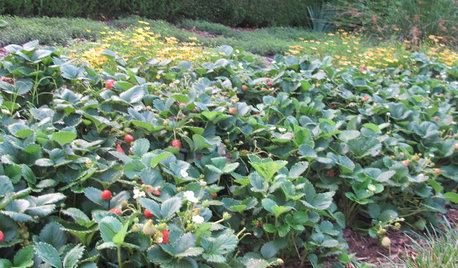
REGIONAL GARDEN GUIDESSoutheast Gardener's September Checklist
Fertilize strawberries, plant a tree or two and beckon hummingbirds to your Southern garden this month
Full Story
FARM YOUR YARDHow to Get Good Soil for Your Edible Garden
The nutrients in your soil feed the plants that feed you. Here are tips on getting it right — just in time for planting season
Full Story
GARDENING FOR BUTTERFLIESGardening for the Bees, and Why It’s a Good Thing
When you discover how hard bees work for our food supply, you may never garden without them in mind again
Full Story




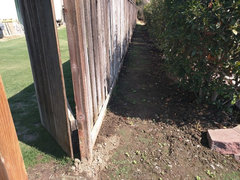


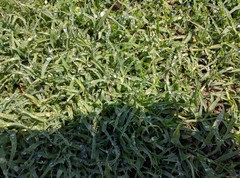
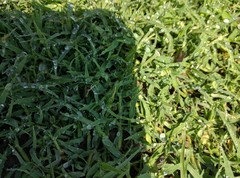
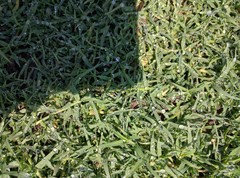
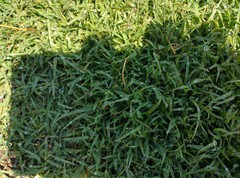


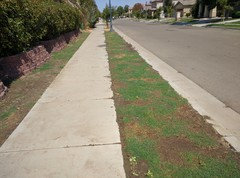


UserOriginal Author